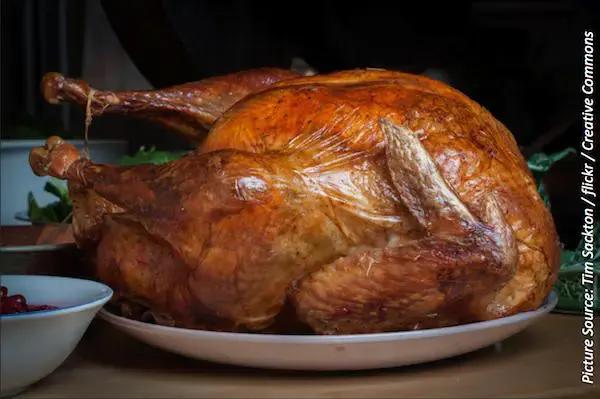What you need to know
Mistakes made during the handling and preparation of poultry, particularly turkey, can lead to food-borne illnesses. This is a significant concern during Thanksgiving when a large number of turkeys are consumed.
The USDA advises against washing turkeys in the kitchen sink, as this can spread bacteria around the kitchen environment.
USDA recommends cooking stuffing separately from the turkey to ensure it reaches a safe temperature. However, if tradition dictates stuffing the turkey, it's crucial to use a food thermometer to ensure the stuffing reaches 165°F.
According to the US Department of Agriculture (USDA), it is estimated that over 46 million turkeys are consumed on Thanksgiving Day.
With individuals rushing around to get all the poultry and sides prepared and served, cooking mistakes can be made and guests can fall ill. In fact, according to the Centers for Disease Control and Prevention (CDC), the majority of poultry-associated food-borne disease outbreaks in the United States stem from mistakes made when handling and preparing food or inadequate cooking.
One study reviewed outbreaks that were reported to the United States’ Food-borne Disease Outbreak Surveillance System between 1998 and 2012, and out of 1114 outbreaks, 279 were associated with poultry—accounting for “the highest number of outbreaks, illnesses, and hospitalizations.”
Luckily, we’ve compiled a few tips that will help keep the holiday bacteria-free.
Wash your hands—not the turkey.
The USDA does not recommend that consumers wash their turkeys in the kitchen sink. However, according to a FDA Food Safety Survey, a whopping 68% of consumers still do this. Those who wash their turkeys in the sink run the risk of splashing bacteria up to 3 feet around the kitchen, which could contaminate the environment. Washing the poultry does not eliminate bacteria; to kill bacteria you need to adequately cook the turkey to the correct internal temperature.
Safely thaw your turkey.
The CDC stresses that there are 3 safe ways to thaw your turkey: in the refrigerator, in a sink filled with cold water that is changed at 30-minute intervals, or in the microwave. While your turkey remains frozen in the freezer it is safe, but when you’re thawing your turkey, it needs to defrost at a safe temperature. You should never let the turkey defrost out on the counter because when it is left out for over 2 hours, the temperature of the turkey can become unsafe. Once the temperature reaches what the CDC refers to as the “danger zone,” 40°F to 140°F, bacteria will quickly grow.
Should you stuff the turkey?
According to the USDA, no; the safest way to cook stuffing is in a separate dish. Even though the turkey may be cooked to the correct temperature, the stuffing inside it may not have reached the same safe temperature that would eliminate all bacteria. However, if your tradition is to stuff your turkey, the CDC recommends putting the stuffing in the turkey just before cooking. Use a food thermometer to gage that the stuffing’s center has reached 165°F. Furthermore, after removing the turkey from the oven, you should wait 20 minutes before removing the stuffing from the turkey’s cavity, which gives it time to cook a little bit longer.
Cook your turkey safely.
It is important to ensure that your turkey is cooked to the correct internal temperature, which you can measure by using a food thermometer. The oven should be set to at least 325°F. The turkey should be completely thawed and placed breast side up in a roasting pan 2 to 2 ½ inches thick, according to the CDC. While the turkey is cooking, the USDA recommends testing for doneness in the following 3 areas: the thickest part of the breast, the innermost part of the wing, and the innermost part of the thigh. All 3 areas should be 165°F.
Remember the 2-hour rule.
Do not leave any foods out on the counter for more than 2 hours because bacteria—such as Clostridium perfringens—will grow. C perfringens, according to the CDC, is the second most common cause of food poisoning. In fact, outbreaks of this bacteria most commonly spring up around Thanksgiving and Christmas and have been linked to foods that are commonly served throughout the holiday season. Therefore, it is important to put all leftovers in the refrigerator, which should be set to at most at 40°F. Leftovers should not be left in the refrigerator for longer than 4 days.
For further information on food safety tips, visit FoodSafety.gov.
